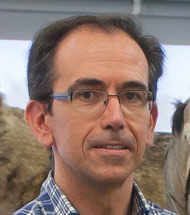Vipers, wasps, mosquitoes and ticks, among the animals that cause the most health problems in summer
University Science Museum course to address the problem of invasive species, which cost the EU $12 billion a year

PHOTO: Manuel Castells
"In our latitude during the summer period. there are frequent reports of bites by vipers, wasps, ticks and other arthropods.". The professor and expert in Ecology of the School of Sciences of the University of Navarra and director of the course "The species we do not see"explains that although we live with these species all year round, "health problems multiply in summer because both they - due to their biological cycles - and we share more spaces in the countryside, the mountains, the beach or in the street during the holiday period".
Precisely this summer have taken place several tragic episodes in which their protagonists have died after being bitten by ticks (as was the case last week in Badajoz) or of wasps. In at least one of them, the Asian hornet (Vespa velutina nigrithorax). "This species arrived in Europe - specifically in France - in 2004. Since 2010 there are records of its presence in Spain, where it has spread at great speed, seriously affecting native species and causing the consequent economic impact on the environment.. In addition, in urban areas, their nests can be very visible at certain times of the year and cause concern. However, they are not more aggressive and their bites are not more harmful than those of native species," the expert clarifies.
This and other invasive species are the protagonists of the summer course "The species that we do not see", promoted by the Science Museum of the University of Navarra and that will take place from August 27 to 30 at the Palacio de Condestable in Pamplona, as part of the summer courses of the universities of Navarre.
In addition, the course will also address the serious problem of loss of ecological diversityDespite the fact that several million species remain to be discovered, the current rate of disappearance is comparable to the great extinctions that the fossil record tells us about. And this reduction in richness is not only happening in exotic places, but all around us," warns the also researcher of the department from Environmental Biology.
At the same time, invasive species occupy growing spaces, endangering native plants and animals: "In Europe, they are currently considered one of the greatest threats to biodiversity, not only because of their local impact, but also because they can alter the functioning of entire ecosystems and thus affect the very important services they provide," warns the expert. These ecosystem services - such as plant pollination, water regulation or the control of pest species - have been estimated in Europe at more than 400 billion euros per year. Likewise, mitigating the damage caused by invasive species costs the EU 12 billion euros, "without counting the damage to health, mainly derived from the transmission of diseases, allergies, etc."
School In addition to David Galicia himself, this course will be attended by professors from the University of Navarra's Science Museum, Rafael Miranda -with whom a census of invasive species in the Arga River will be held at internship -; Ricardo Ibáñez, professor of Botany, who will end his talks with a internship to learn about the wealth of plants in our environment; and Ignacio López-Goñi, director of the Science Museum, disseminator and Full Professor of Microbiology, whose sessions will focus on the diversity of the microbial world.
